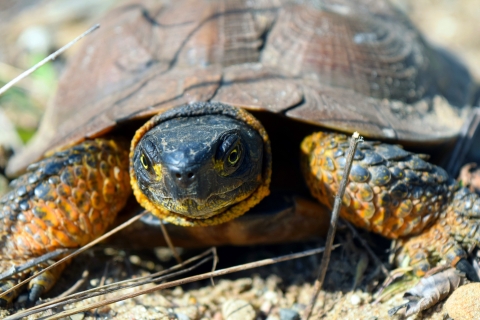What We Do
Our Projects and Initiatives
In 2021, the Service released a framework to set the stage for achieving the goals of the Act by building upon existing conservation partnerships, priorities, and plans in the Chesapeake Bay watershed, which connects six states and the District of Columbia.
Reflecting input from partners and stakeholders representing numerous agencies and organizations, including state wildlife agencies, “Chesapeake WILD: A network in action for wildlife conservation” lays out a vision for collaborative conservation organized around five focal areas.
The Chesapeake Bay is the largest estuary in the U.S. and supports roughly 3,600 species of plants and animals, including 348 species of finfish, 173 species of shellfish, and 2,700 species of plants. Nearly one million waterfowl winter on and near the bay – approximately one-third of the Atlantic Coast’s migratory population. The birds stop to feed and rest during their annual migration along the Atlantic Flyway.
The ecological health of the watershed is also crucial to the health, well-being, and economic vitality of more than 18 million people who live and work in the region, many employed in industries tied directly to the watershed, like outdoor recreation, farming, and fishing.
Chesapeake WILD complements existing efforts in the watershed by focusing on enhancing habitat for fish and wildlife and recreational opportunities for people.
Our Laws and Regulations
On October 30, 2020, the America’s Conservation Enhancement Act (the Act) became law (Public Law No: 116-188). In Title 1, section 111, Congress required the U.S. Fish and Wildlife Service (USFWS) to establish a nonregulatory program to be known as the “Chesapeake Watershed Investments for Landscape Defense program,” or Chesapeake WILD, for the following purposes:
- Coordination among federal, state, local, and regional entities to establish a shared vision for sustaining natural resources and human communities throughout the Chesapeake Bay and its watershed
- Engagement of diverse agencies and organizations to build capacity and generate funding that address shared restoration and conservation priorities
- Collaboration to administer a grant program and implement projects to conserve, steward, and enhance fish and wildlife habitats and related conservation values

